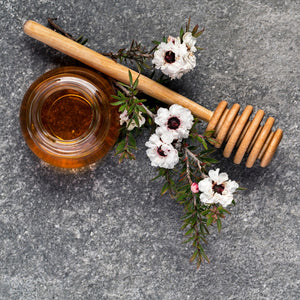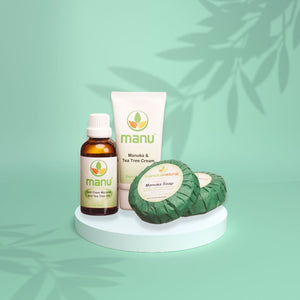
What is Nail Fungus?
Finally, remove the nail fungus and walk barefoot again without shame
===================================================
If you have some visible changes in your nails, it is unlikely that you are looking forward to buying new sandals or going to the beach and vacationing. The idea of being barefoot gives you a slight chill.
Nail fungus doesn't look attractive, and in most cases, you won't even be able to mask it with nail polish. An ugly and bumpy surface differs from a smooth one, even under the varnish.
In fact, if your nails are thickened, uneven, and crooked, you should not highlight them additionally with nail polish.
Don't try to hide nails. Instead, treat them with essential oil for toenail fungus.
-

What is nail fungus?
It is a nail change caused by a fungal infection of the nail plate.
Fungi are microorganisms that grow in dark, moist, and warmly conditions, do not need light, and attack the human body. They often settle on the nails and go together with the fungus on the feet.
It is clear why this phenomenon occurs mainly on the legs.
Not all of us have perfect nails. While some complain that their nails are fragile and break easily, others have the opposite problem - thickened toenails. This is often a sign that you have nail fungus. Although they are one of those microorganisms that generally live with us in symbiosis, they become a threat when they multiply too much.
Well, you need something to 'shoe away' nail fungus. First choice would be an non-invasive way, like essential oil for toenail fungus.
Fungal nail infection - symptoms
It begins as a tiny dot, on the nail, on its inner side, or at the very bottom of the nail. Most often, it is yellow or white. Over time, when the conditions are right, it expands from a dot to a spot that covers the whole nail.
As a result, yellow toenails appear, thickened and crookednails full of unevenness and furrows that split into several layers.
Sometimes these changes affect one nail, and it is not uncommon for them to spread to other nails, as well as to infect the skin around the nail.
Sometimes infected nails separate from the base, so there is a high probability that they will fall off.
Essential oil for toenail fungus treatment will take the shortest time if you catch the process at the very beginning. So, take a good look at your nails now!
Fungi are insidious - they start quietly and gradually but slowly take their place on the nail plate and change its appearance.
Several types of fungus can cause changes in the nails:
- Dermatophytes are superficial fungi that do not penetrate deeper into the skin. In addition to the nail, the skin and hair can be infected with this fungus. So, for example, you can get a foot infection, which is better known as an athlete's foot. This type of fungus is the most common cause of nail changes.
- Yeasts are fungi that usually live in our body, which specific triggers can disrupt and cause them to multiply beyond the ordinary. Such is, for example, candida. Fungi like this can be found more often on fingernails.
- Ringworm is also a type of fungus that can infect the nail, although this is less common.
You may not have known, but the changes in your nails and appearance reveal a lot about your health. So, nails are not just for painting! Pay close attention to essential oils for toenail fungus, and which one to choose.
How can you get nail fungus?
When we say that the nail is infected, it usually means that we picked up the fungus somewhere.
Does this mean that nail fungus is contagious?
What is the cause?
How can you get them?
You can usually pick up nail fungus in one of the following ways:
- Walking barefoot in wet places such as swimming pools, bathrooms, and the like.
- Spending most of your time in a humid atmosphere, whether it requires you to work or maintain the house.
- Wearing synthetic socks and shoes that do not allow the skin to breathe and absorb sweat, but on the contrary, promote sweating.
- Sharing socks or shoes with someone who has nail fungus
- Using infected nail material and equipment at home or in a beauty salon
- Wearing artificial nails and layers of nail polish over an already infected nail
Are fungal infections more common on the feet or hands?
Without a doubt, toenail fungus is more common. However, you may think that it's natural for your toenails to be rough, thick, and curved because they're more resilient and should be when you wear shoes.
Well, it's not like that!
It is more likely that your nails are infected and that the fungus is the cause of toenail disease.
Why on the feet?
Primarily because of the conditions that fungi need to grow. Wearing shoes and socks all day makes your feet sweat, and your body heat creates the ideal temperature for them to reproduce and grow.
Can fungi also occur on the hands?
They can, especially if your hands are in water all day or you bite your nails. Fungi on the hands are often caused by candida - a fungus that usually lives in our body. If you bite your nails, you damage their edges and skin. Since we use our hands to perform daily activities, they are in constant contact with many bacteria, fungi, and moisture.

Damage to the skin and nails are ideal places for developing fungi. Then when you bite your nails, it all comes to your mouth and throat. Let's be honest, nail biting is an almost unconscious process, and it is unlikely that you will wash your hands before indulging in this harmful habit. However, that's one way to pick up candida on your nails, spread it around your body, and get systemic candidiasis, which may be why you crave sweets.
This infection process can also happen in reverse. Candida on the nails also occurs when it has already multiplied too much in the body, for example, after the use of some antibiotics or some bad lifestyle habits, and you bite your nails and, in that way, "inhabit" the fungus on your nails.
Regardless of the causes of the appearance of fungi, the consequences should not be neglected.
This is where essential oil for toenail fungus comes in. Why? Well for several reasons.
It is...
Antibacterial
Research shows that manuka oil can victoriously eliminate several everyday bacterial infections, such as S. aureus, Staphylococcus aureus, and even MRSA, Its nature showed that this is the best essential oil for toenail fungus. Although tea tree oil is potent for targeting bacteria, studies indicate that manuka is more powerful.
Antimicrobial
Manuka oil is an effective cleaning agent for traces of microbes. That's why oil from manuka is one of the best traditional options: it helps cleanse the entire area.
Antifungal
Manuka oil is one of the most powerful native solutions for targeting fungal infections due to its high concentration of triketones. Unlike many topical creams, oil from manuka and soaps work with the body to help you fight the fungus. In addition, essential oil for toenail fungus is able to penetrate deeply into the nailbed.
Antiviral
You also risk developing other infections from bacteria and viruses when you have any fungal infection. The very nature of disorders compromises your immune system putting you at increased risk. If you're exposed to viruses, manuka oil can help you fight back before contracting an infection. Yes, it has potent antiviral properties too.
Try our fungus-fighting East Cape Manuka Oil today!
https://www.manukanatural.com/nail-fungus-treatmen...
In the end ...
What else I haven't mentioned?
To save your nails and get back to normal look, you may want to consider the following.
1. Eat a balanced diet that includes enough healthy sources of protein (e.g., whey protein, eggs, and lean animal meat, an essential zinc source).
2. Eat lots of green vegetables and berries containing antioxidants, vitamins, and minerals necessary for nail health.
3. One of the most important vitamins that help maintain strong nails (and hair) is vitamin B7 or Biotin. Among other things, the body needs it to metabolize fats, carbohydrates, and amino acids. In addition, Biotin plays a role in creating keratin, an integral part of nails. Where is Biotin found? In egg yolk and animal omega-3 fatty acids.
4. For hard nails, it is vital to keep omega-3 and omega-6 fatty acids in a ratio of 1:1. Brittle and soft nails are often a sign of this broken relationship. To fix this, eat less vegetable oil and more animal-based omega-3 fats (e.g., sardines, anchovies).
Healthy, strong, and shiny nails can be achieved by consuming nutritional supplements in combination or individually.
Collagen (protein) - has a beneficial effect on nails prone to splitting and brittleness.
Zinc – has a beneficial effect on nasty and brittle nails.
ORIGINALLY PUBLISHED on blog.manukanatural.com


